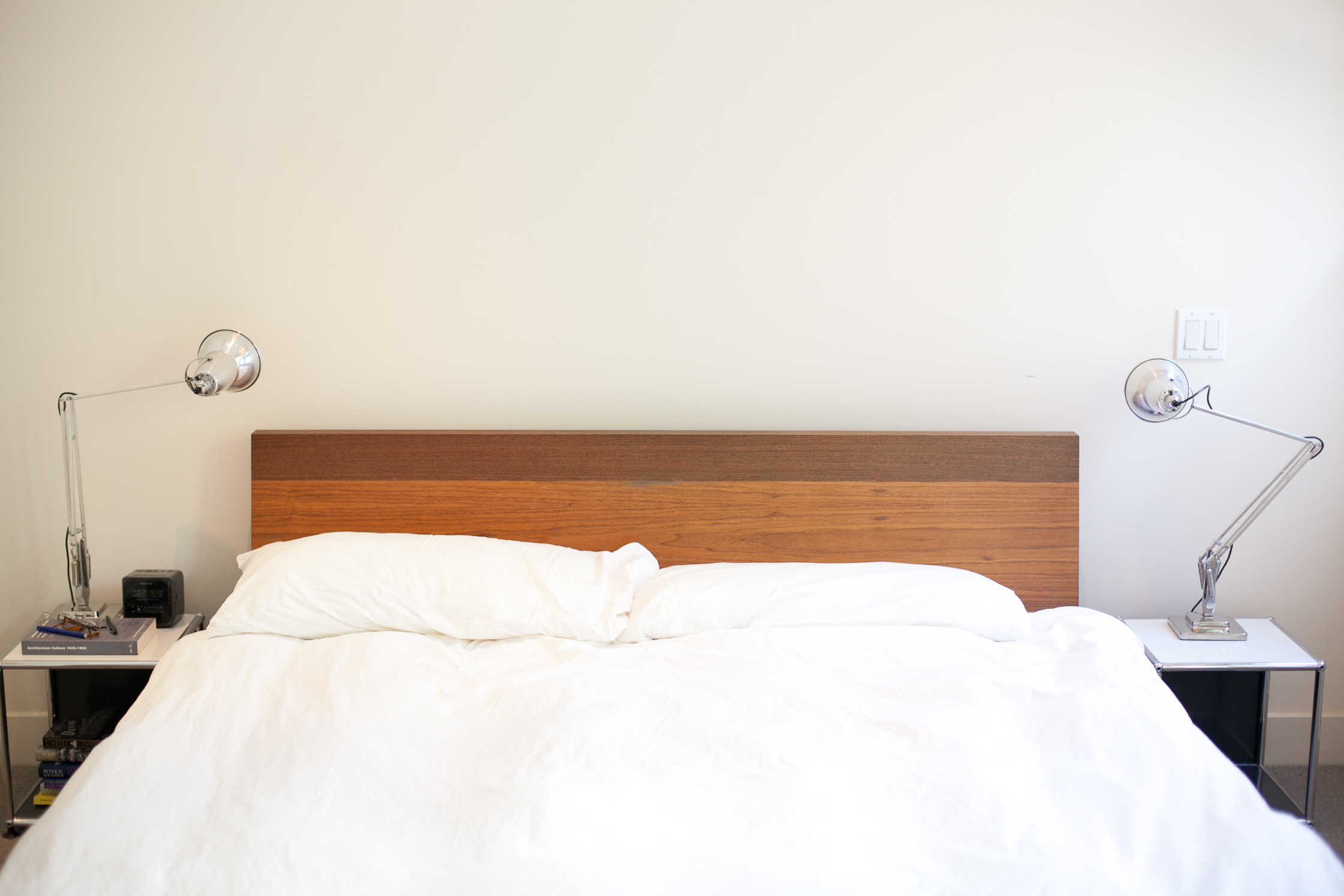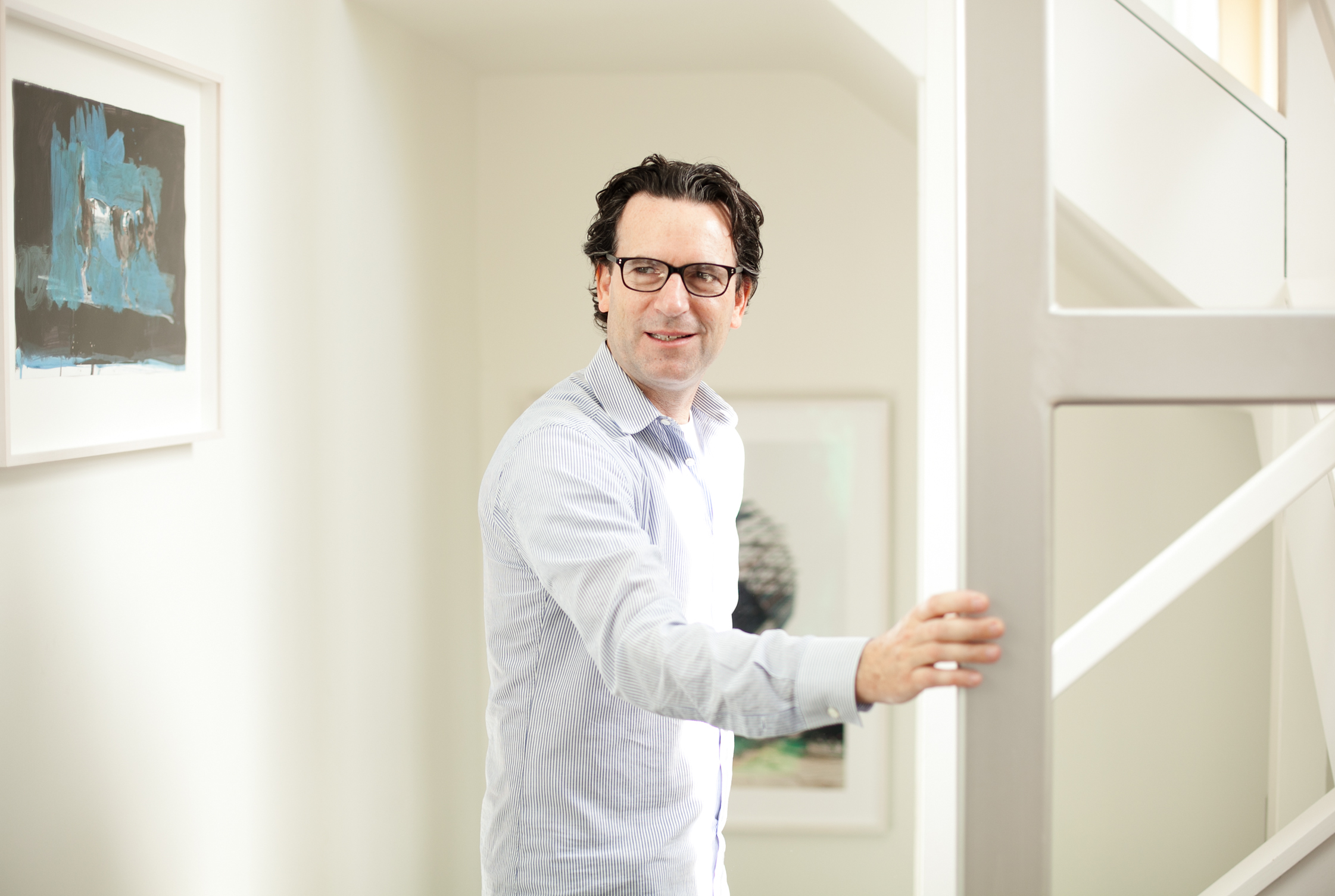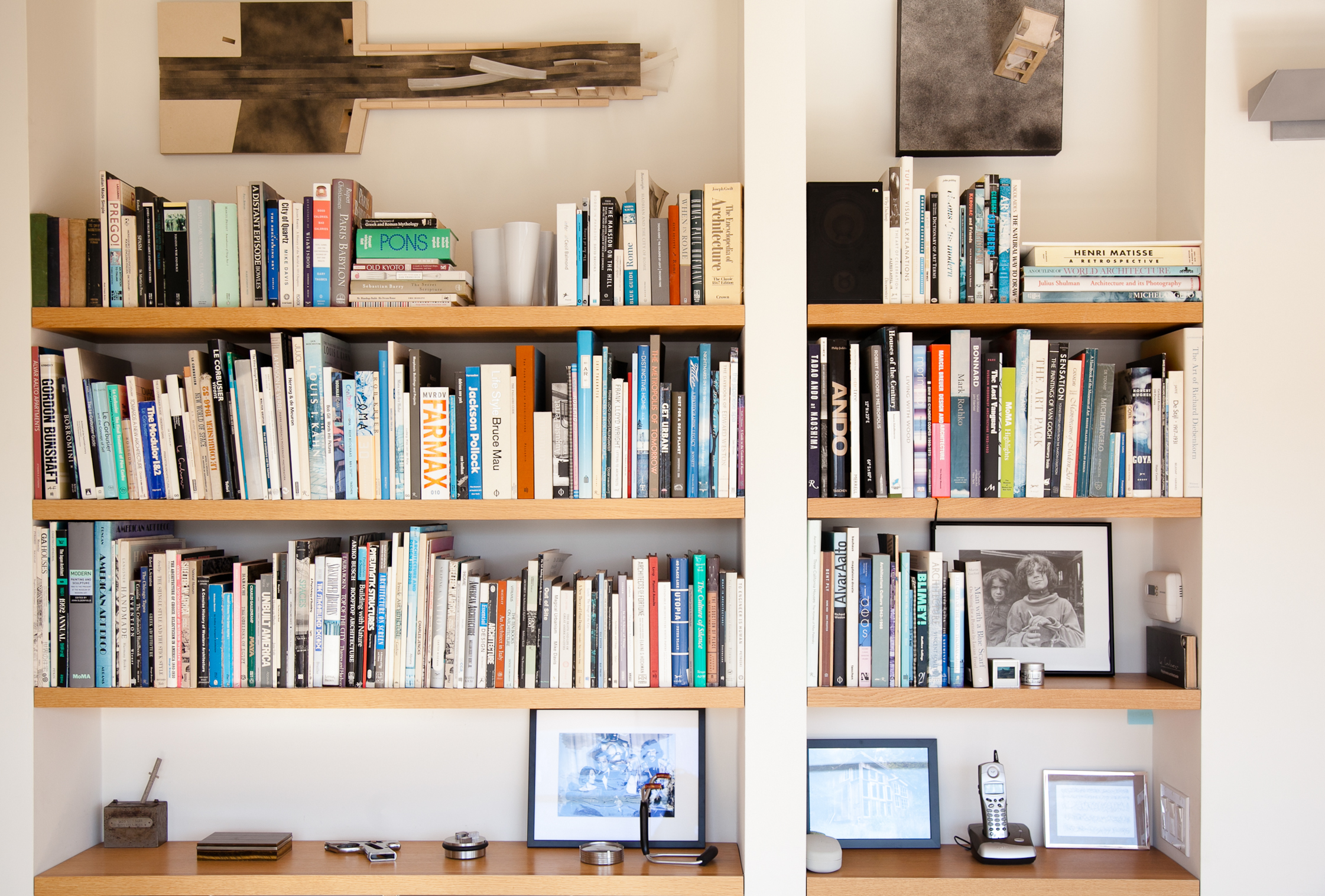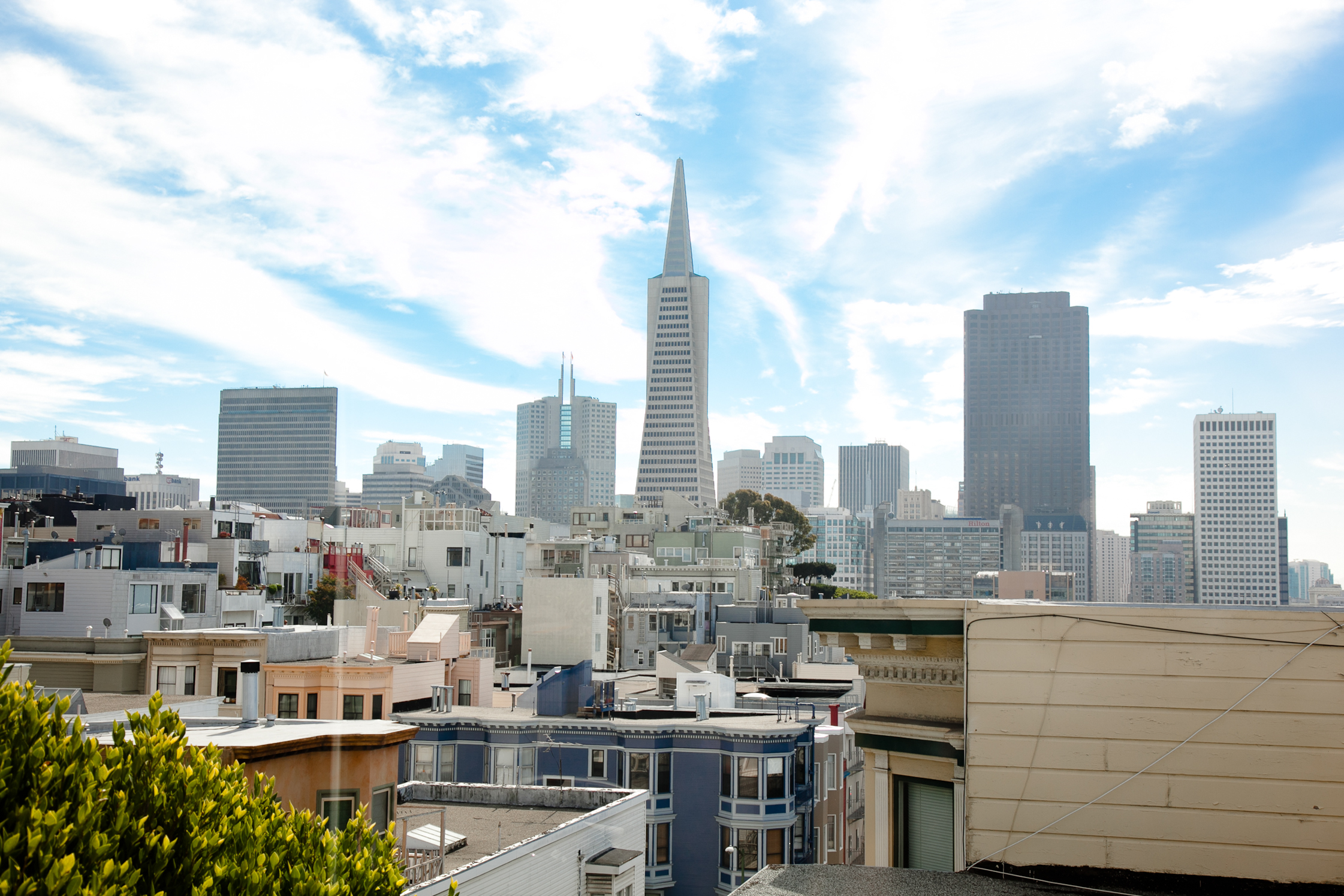Cass Calder Smith understands the dichotomies of space: urban and rural, public and private, modern and traditional. Dualities shape his own life, too: He grew up in New York and on a Californian commune. He worked as both an architect and a carpenter. And he designs restaurants as well as homes. His structures and home are marked by a clean, modernist approach. Artworks, mainly architectural photographs, hang neatly on the walls – a collection he has amassed over the last two decades. From his rooftop in Telegraph Hill, Cass has a 360 degree view of San Francisco. This is where his ideas come to life.
For a man who has built several iconic restaurants in the Bay Area, including Lulu, Perbacco, Twenty Five Lusk and Reposado, Cass has a refreshingly humble attitude toward his own work. He insists that his success is not so much about brilliance or creativity, but about tenacity.
This portrait is part of a series with Vitra. Visit Vitra Magazine to find out more about Cass’ design pieces and other individual interior concepts.

































What a view! And there’s so much light coming in!
Yeah. I like space, so I tried to make my home feel as large as it could be. And I tried to bring in light in interesting ways. In this end, it’s all about space, form, light and views, the four fundamentals of architecture.
Not easy to chose a favorite room in here. Do you have one?
I love my dining room table. I just sit at that table and stare out the window and work. I’ve designed so many buildings at that table – it’s amazing. The table itself is built from a drafting table that my mom found and didn’t want anymore. So I converted it.
So you sometimes design your own furniture?
Sometimes. I also designed that big sectional sofa in the living room. It’s based on a Florence Knoll design, but those Florence Knoll ones aren’t very comfortable.
Is it your favorite piece?
One of them. I also really like my Eames Lounge Chair and Ottoman. They’re stylish, timeless and comfortable. I love Eames furniture. Those guys are pretty inspiring.
What is it that makes mid-century design so special?
It broke in a huge way from everything else that was being done. It charted new ground, but it was also consistent with everything that was going on in architecture. Nowadays architects don’t really design furniture very well, but back then they really did. The Eames. Le Corbusier. The Barcelona Chair. They were all doing it. A lot of it is over-exposed today – it’s everywhere. But that’s ok.
How did all that come about? Is it a childhood thing? How did you grow up?
I lived in New York City until I was 10. My dad was a journalist, and we lived a very cultural life, with a lot of other journalists and artists. Then my parents split up, and my mom, brother and I moved to Northern California. We lived on a commune called “Star Hill Academy For Anything” for about four years in the early 70s. That was completely off the grid, so there was no electricity or water. That was pretty formative too because it was so extreme.
It sounds like it. I guess it taught you some practical skills…
Totally. There were a lot of people building weird houses in trees and underground. Nobody really knew how to build houses. They just figured it out, and I was always helping. That was probably the beginning of when I got interested in buildings.
Did you like living on a commune?
It was good and bad. I complained a lot because I had grown up with running water and electricity and restaurants and grocery stores, so I kept asking why we were prolonging a camping trip. But at the same time, it was fun and interesting because we got to do different things, like help rebuild trucks from the axles up and build houses with other people. We weren’t treated like kids there. We had jobs, like collecting firewood and going to the spring to haul water. It was a bit like life a hundred years ago.
Does that explain why you became a carpenter?
Well, after high school, a close family friend who was a carpenter gave me a job in the Bay Area. I learned a lot. Within a year I got pretty skilled. At that point, I didn’t know if I wanted to go into engineering or architecture, because I didn’t really know the difference. I knew I wanted to draw and design though. After my second year of working as a carpenter, people started asking me if I could design and build a deck or a fence for them, which then led to a kitchen remodel or a bathroom. I started spending my weekends and summers doing that, and the design-build jobs just kept getting bigger.
And then this led to architecture…
Yes, eventually I had to make a decision between being a builder or an architect. It wasn’t a difficult one. I knew I was an architect. So I went back to Berkeley and got my master’s degree in architecture. Just as I was finishing grad school, I got hired to design Lulu. That was kind of a coincidence. A roommate of mine was a chef.
A good coincidence?
It was a happenchance thing that turned out to be a smash hit.
Sounds like it’s still one of your favorite projects…
Yes, Lulu is really one of my favorites. It was great thing because I was renovating a big urban building, an old warehouse. And I was creating a restaurant – a big one – which I consider to be a public setting. It was a lot of fun being a minor celebrity for a moment. It was my 15 minutes of fame.
Now when you take on a new project, what are the first things you think about?
It depends on the project: who the owner is and what they want. In general, I try to work from large to small. I try to think conceptually about what the project is. Is it an epic or an indie? Is it avant-garde or modern or agricultural?
And once you’ve figured that out?
Then I start to design it architecturally – that’s when a lot of other things come into play. Are there views? What elements do we have to work with? Architecture is about solving problems, so I look for the problems, solve them and then use the materials and details to support the architecture.
Do you have a favorite material that comes up in most of your projects?
People look at my projects and say: “Cass, you use a lot of wood.” And I do bring in wood and warmer materials very often. For myself though, I mostly like white, clean space. I like to see the way the light comes through, and I like it to be peaceful. But for most people, clean white space doesn’t feel right – it’s just too cold. I guess I have a higher tolerance for cold than most people.
The city around you is anything but cold. What are your favorite spots here in San Francisco?
My roof’s not too bad! And my favorite restaurant is Zuni. I like going to the Ferry Building Farmers Market too, and I like the taquerias in the Mission. I love going to Pancho Villa and Taqueria Cancun. It’s such a California thing. You know, I spend half of my time in NYC, so I want to make the best of the Bay Area when I’m here.
Are those two cities your source of inspiration? What else inspires you?
Cities definitely do. Not just NYC and San Francisco. Also Rome for its history and London for its happenings. I must say I don’t get too inspired by architecture and architects today. But I’ve always felt very inspired by the masters of architecture like Le Corbusier and Mies Van Der Rohe.
That was a while ago…
Yeah. Today I think you need to get out of your field, look at other fields where there’s creative thinking. Guys like Rem Koolhaas, Jacques Herzog, Jean Nouvel – they are doing amazing projects, but architecture isn’t like painting and photography: it’s so real that you have to deal with gravity and water and big budgets. There’s so much reality to it, it can sometimes hold creativity down. So I often turn to visual arts for inspiration. And I like photography a lot too, especially Gursky and the Dusseldorf School photographers: Thomas Struth and Thomas Demand blow me away.
By now, you’ve turned into a bit of a role model yourself. What advice would you give to an aspiring architect?
Two things: Expose yourself to as much as you can so that nothing is limiting you. And you have to just work really, really hard. I forget who said it first, but I truly believe that success is 5% inspiration and 95% perspiration.
Thanks Cass for telling your story and showing us your home. To see Cass’ work, visit his architecture firm’s website here.
Photography: Molly DeCoudreaux
Interview & Text: Natalie So
